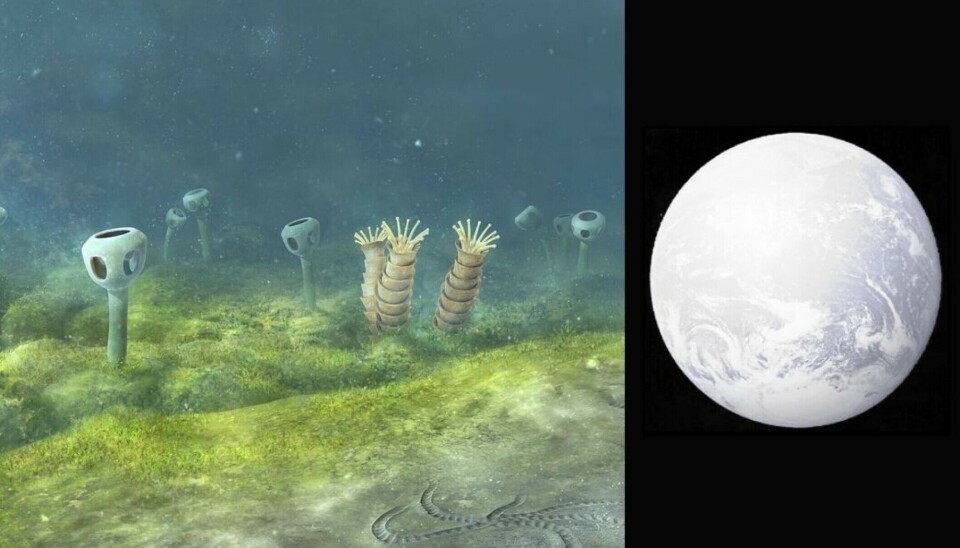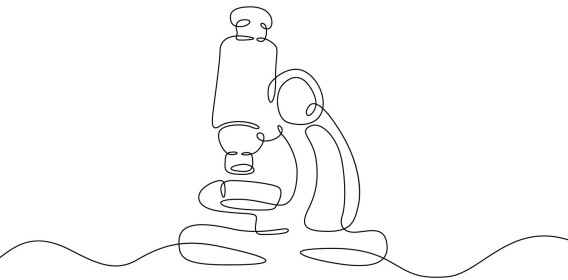



Top 10 of 2024:
Helium, a medieval gauntlet, and the oldest animals on Earth
Here is the list of the most read articles on Science Norway during the last year.
New scientific discoveries were made in 2024, providing new insights into a wide range of topics.
10. Exciting find: “I could hardly believe it”
In the summer of 2024, we asked archaeologists to share their most exciting find.
For Jørgen Johannessen, it all started with a routine investigation. He is a marine archaeologist at the Norwegian Maritime Museum.
Johannessen donned his diving gear, jumped into the sea, and swam to a depth of 12 metres.
There, he made a discovery that was the first of its kind in Norway: A truly unique artefact from the Bronze Age – a Bronze Age axe.
“I was completely stunned by the discovery,” says Jørgen Johannessen in this article on Science Norway.


9. People liked AI art – when they thought it was made by humans
Artificial intelligence has amazed people with its ability to create detailed images of what you ask for in seconds. These images are often colourful, decorative, and nice to look at.
People tend to like images created by artificial intelligence (AI). Especially when they believe the images were created by humans, according to a study that Science Norway wrote about in March 2024.

8. Massive snowfall and unusually freezing temperatures in Norway
Norway experienced extreme weather last winter. A temperature of minus 43.5 degrees Celsius was recorded in Kautokeino in January 2024. In other parts of Norway, schools were closed due to heavy snowfall. Cars and buses were stuck, and people lost power.
But why was there so much snow specifically in Southern Norway?
This phenomenon was explained as being caused by moist air from the west, according to this article on Science Norway.

7. Oldest animals on Earth found in northern Norway
For ten years, Anette Högström has led an international research group in search of ancient fossils in Finnmark, Norway’s northernmost county.
The team has been searching for the earliest forms of animal and plant life on Earth, Science Norway wrote in October 2024.
“Northern Finnmark is one of the very few places in the world where we know it’s possible to find fossils from around 600 million years ago,” she said.
The fossils are from small creatures. Instead of animals and plants, the research focuses on ‘eukaryotic organisms’ that lived in shallow seas.
The researchers might also have uncovered clues about what happened to the first animal-like organisms when our planet became a ‘snowball’ 600 million years ago.

6. What did dinosaurs actually sound like?
If you've seen the films Jurassic Park or Jurassic World, it's not strange if you think Tyrannosaurus rex roared like a lion. But dinosaurs were not mammals, so they probably did not sound exactly like that.
There have been many different dinosaur species throughout the history of the Earth, and they probably made many different sounds. You can read more about this in an article on Science Norway.

5. Why does physical activity exacerbate symptoms in ME/CFS and long Covid patients?
Fairly mundane activities can send ME/CFS sufferers to bed for days, with symptoms like extreme fatigue, flu-like feelings, pain, brain fog, and – paradoxically – sleep problems.
This is called PEM – post-exertional malaise.
Physical, social, mental, and emotional stress can cause these abnormal reactions, even when the activity is enjoyable, like reading a novel or visiting friends.
But what is actually PEM? Science Norway asked – and answered – in this article.

4. Snus is harmful to your gums
There is still much we do not know about what snus does to a person’s health. One thing is certain, however: Many snus users have discovered that their dentists can detect their snus use.
A Norwegian study sheds light on how harmful snus is for your gums, Science Norway wrote in February 2024. Researchers found that a lot can happen to your gums over a three year period.
They distinguished between two different types of damage. One was changes in the surface of the gums, which become white and wrinkled. The damage was more serious for one in five snus users. These individuals experienced gum recession around some teeth, revealing more of the tooth surface.

3. Study raises the alarm on energy drinks
Over 50,000 Norwegian students were asked if they used energy drinks and how well they slept. Those who drank even small amounts of energy drinks had significantly greater problems with sleep than other students.
Students reported that it took them an average of 30 minutes longer to fall asleep and that they slept one hour less than those who did not consume energy drinks.
“There are few people who drink such large amounts of coffee. In energy drinks, the bitter taste of coffee is almost non-existent,” senior researcher Børge Sivertsen at the Norwegian Institute of Public Health says in this article.

2. The remaints of a gauntlet
An article about a steel gauntlet attracted many readers in 2024. It was part of Science Norway's summer series about Norwegian archaeologists' most exciting finds.
Archaeologists discovered the gauntlet on the seabed in what was once Oslo harbour before 624. The area has never been investigated by archaeologists before, making the find extra special.
“The gauntlet would never have been left lying in the streets in medieval Oslo. This is an extremely expensive object. An ordinary person would never own something like this. The only way you can find things like this is if they’re buried or lost in some way. On the seabed, no one could have gotten hold of it,” said archaeologist Håvard Hegdal.

Most viewed
1. Are we really running out of helium?
The most read article from Science Norway in 2024 addressedthe question: Are we really running out of helium?
Do you celebrate birthdays and special events with floating balloons filled with helium? Maybe you shouldn't – helium reserves are about to run out, several newspapers wrote many years ago.
But is this really the case?
“There has been a lot of talk about the world running out of helium,” says Professor Reidar G. Trønnes.
Helium is important for research. It cools down magnets in MRI machines that examine people for cancer and other diseases.
“However, the good news is that we're not running out of helium,” says Trønnes.
That means you can breathe easy and get some helium balloons.


Subscribe to our newsletter
The latest news from Science Norway, sent twice a week and completely free.






























